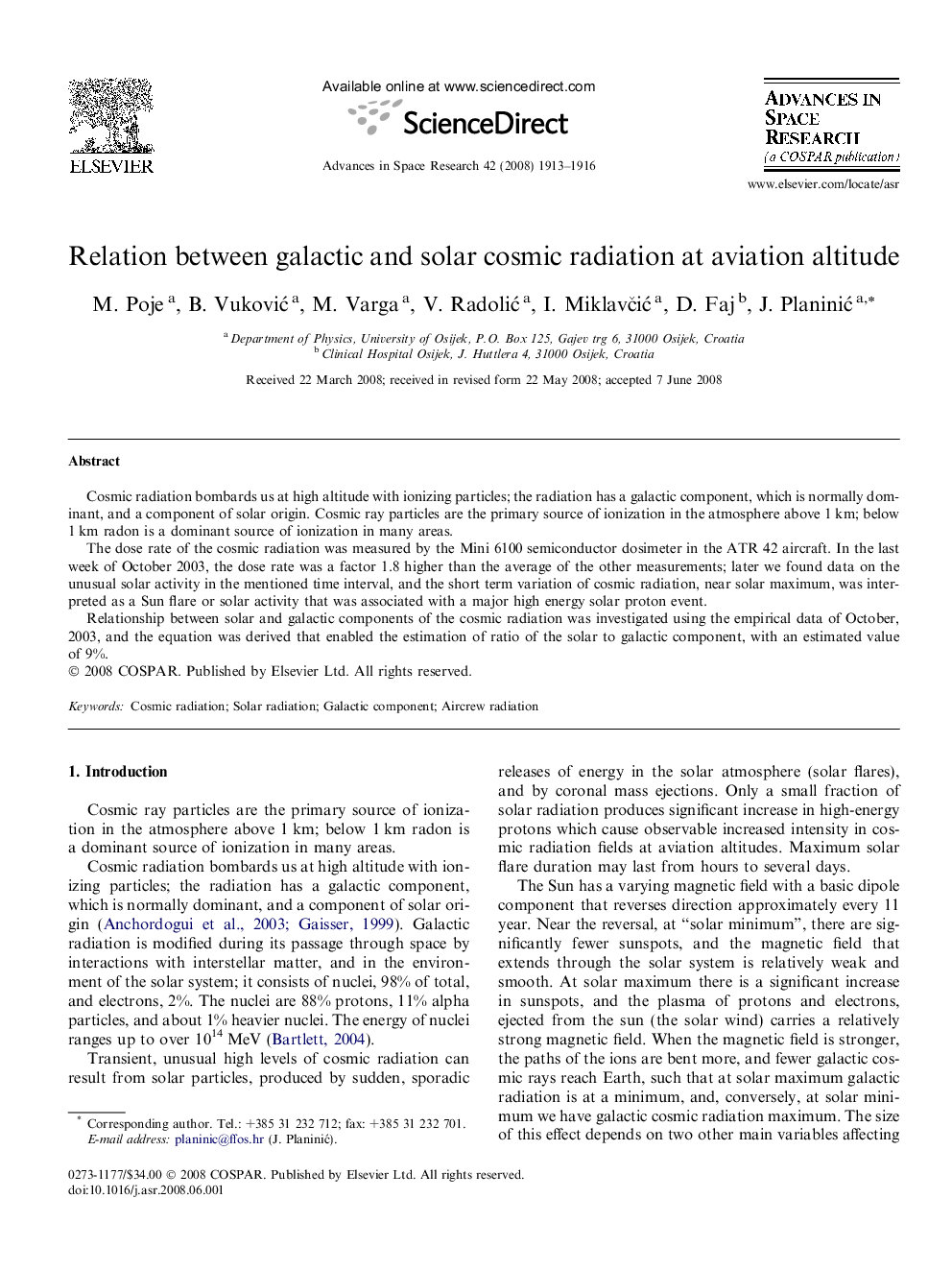| Article ID | Journal | Published Year | Pages | File Type |
|---|---|---|---|---|
| 1767184 | Advances in Space Research | 2008 | 4 Pages |
Cosmic radiation bombards us at high altitude with ionizing particles; the radiation has a galactic component, which is normally dominant, and a component of solar origin. Cosmic ray particles are the primary source of ionization in the atmosphere above 1 km; below 1 km radon is a dominant source of ionization in many areas.The dose rate of the cosmic radiation was measured by the Mini 6100 semiconductor dosimeter in the ATR 42 aircraft. In the last week of October 2003, the dose rate was a factor 1.8 higher than the average of the other measurements; later we found data on the unusual solar activity in the mentioned time interval, and the short term variation of cosmic radiation, near solar maximum, was interpreted as a Sun flare or solar activity that was associated with a major high energy solar proton event.Relationship between solar and galactic components of the cosmic radiation was investigated using the empirical data of October, 2003, and the equation was derived that enabled the estimation of ratio of the solar to galactic component, with an estimated value of 9%.
